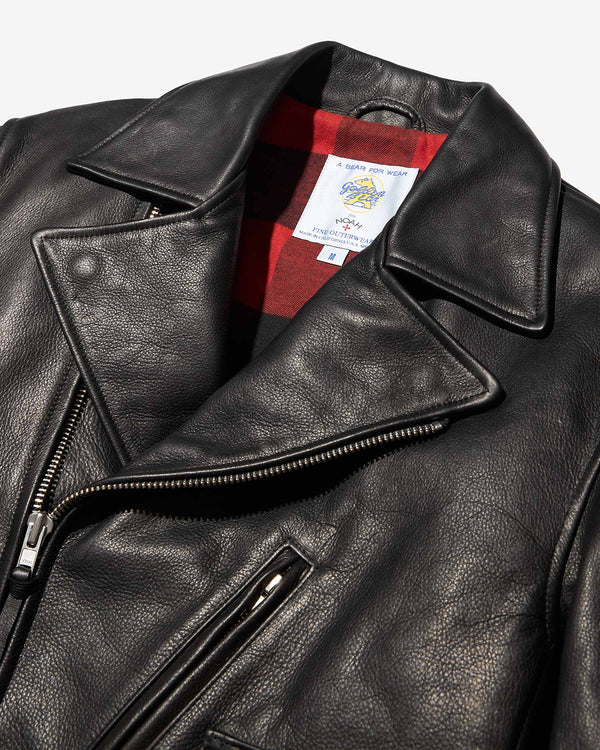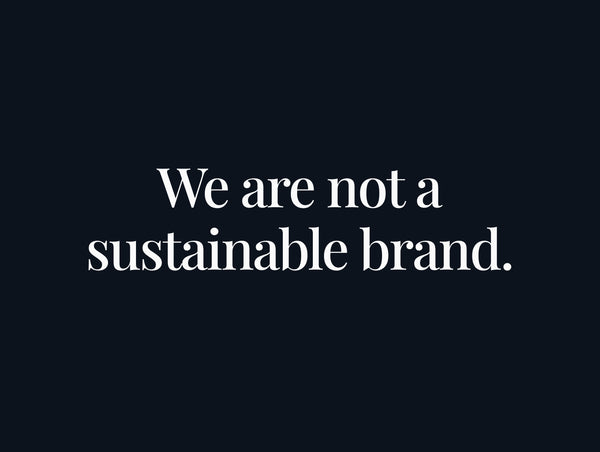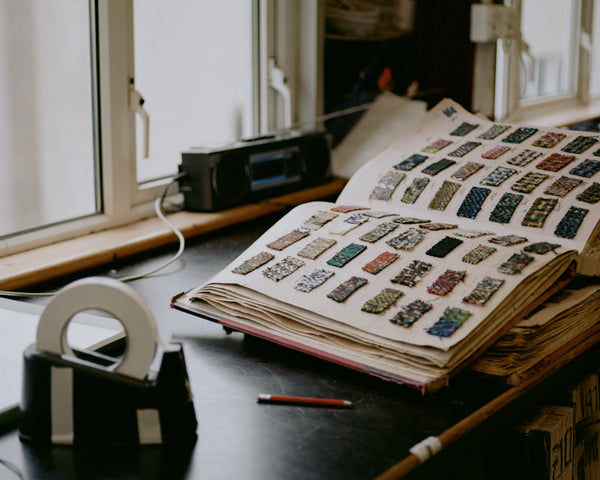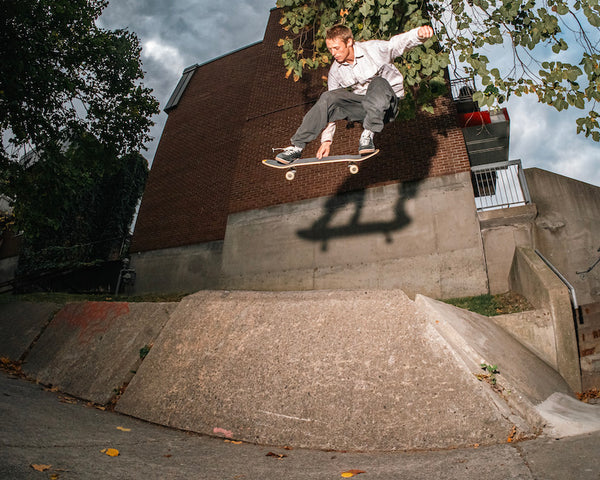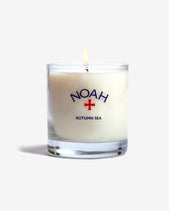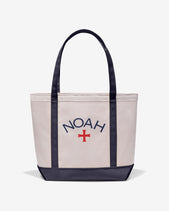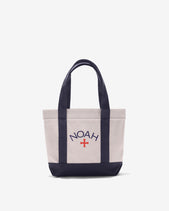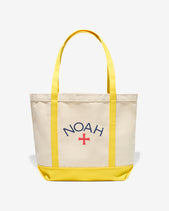
G-Bo The Pro &
DJ Rei Double R
In the early '90s, hip-hop didn’t have the mainstream appeal and presence it enjoys today. It was very much underground and largely controlled by the participants within the culture. DJs at the time held the power to break records and were the gatekeepers of the scene, determining what got played at parties and in the streets. None were more pivotal during that era than G-Bo The Pro and DJ Rei Double R.
The duo made their mark within hip-hop through their mixtapes, which were unique and unlike anything else at the time. Hip-hop wasn’t on the radio like it is now—you couldn’t just turn it on and hear it whenever you wanted. Besides getting the tapes directly from the DJs, record stores and downtown boutiques were the go-to places. These brick-and-mortar spots were cultural hubs, run by people with a genuine passion and deep connection to the music.
G-Bo & Double R were making tapes back then and were true pioneers. They even extended the typical runtime of their mixtapes—most were 90 minutes, but theirs often pushed 96 minutes, giving listeners even more content. We sat down with G-Bo at his downtown office to discuss his early years and the signature style that he and Double R brought to their legendary mixtapes.

Can you talk about your relationship with Double R—how you met, and how you balanced each other out?
He was more of a mentor to me. We had this mentor-mentee dynamic, but I had the equipment, and he had all these ideas and innovations. Once I showed him that he could do things faster and easier with my equipment, we became a great team. He had amazing ideas, and I helped bring them to life, adding my own touch as well.
The balance was great. Double R was incredibly patient and a great teacher, even though he was a bit scatterbrained. He was a genius—always coming up with new, creative ideas—but also very patient. At the time, I was eager to learn and be a part of something special. Together, we created something that felt impactful, and we made a perfect team.
Being raised in NYC, how did the music you were exposed to influence your mixes?
I have to tip my cap to another pair of Latino DJs and producers who predated us—The Latin Rascals. These guys were brilliant producers with a radio show on 98.7 Kiss FM, and their show was pre-recorded with these insanely produced mixes. In a way, they were who we emulated in the mixtape game, but they did it on radio.
What made The Latin Rascals unique was their sound, which was more rooted in the freestyle genre. And by "freestyle," I don’t mean rap freestyles, but the Latin hip-hop freestyle that was huge at the time. They didn’t necessarily look like the typical hip-hop DJs you’d expect, but their production skills were next level. While they were more known for freestyle, me and Double R were hip-hop guys who took that same ethos of intricate, well-produced mixes and applied it to tapes. In many ways, they were our inspiration, and we just adapted their approach to suit the streets and the mixtape culture, bringing that same kind of energy and creativity into the hip-hop world. That’s what made our tapes stand out—they weren’t just a mix of songs, they were a mix of the city.
What was your earliest musical recollection?
My earliest musical memory is Michael Jackson's "ABC." I think that record came out around 1970, or so, but that's the first song I remember having an impact on me. "A, B, C, 1, 2, 3"—oh, I could get with that. It was right up my alley. That’s my earliest recollection of something musical and impactful.
What led you to hip-hop?
I had no choice but to be immersed in hip-hop. I grew up in the Wagner Projects in Manhattan on 123rd Street and Second Avenue, so it was all around me. When I talk about hip-hop, I don’t just mean the music, but the entire culture—the slang, the fashion, the graffiti, and then, of course, the music. I was introduced to the music through jams in my neighborhood. A DJ crew called Spectra Sunshine would set up their equipment under the bridge on 124th Street and First Avenue, just a block from my house. I could walk over, hear the music, and watch people dancing, boogieing, and breaking. It’s hard to remember a time when hip-hop wasn’t a part of my life.
What led you to making mixtapes?
What got me into DJing was my older brother. He was in the service and about 12 years older than me. When he came home on leave, he brought back two turntables, a mixer, and speakers. Before he left, he told me not to touch them, but I was around 10 at the time, and the temptation was just too great. So, I started playing with the records while he was away. That was my first introduction to DJing.
The mixtapes came later. Double R was from the same neighborhood, but he was five years older than me. When you're younger, five years feels like a huge difference, so we weren’t in the same friend group. He was already making tapes back then, doing something wild—he didn’t even have two turntables, but he would use a tape deck, rewind the tape, and mix songs in a way that made it sound like more than two things were happening at once. It was incredible.
One day, he realized I was interested and asked me to do a scratch on one of his tapes. He came to my apartment, saw the equipment I had, and was amazed. I showed him something I had created using a four-track machine—an intro with Nice & Smooth where I played keys and layered all these sounds. He was blown away. That was the moment he realized I could easily do what took him days to achieve. From there, we started working together on tapes.
 Original tape insert layouts. G-bo & Rei would lay out and hand cut each one.
Original tape insert layouts. G-bo & Rei would lay out and hand cut each one.

What was your earliest musical recollection?
Well, My earliest musical memory is Michael Jackson's "ABC." I think that record came out around 1970, or so, but that's the first song I remember having an impact on me. "A, B, C, 1, 2, 3"—oh, I could get with that. It was right up my alley. That’s my earliest recollection of something musical and impactful.
What led you to hip-hop?
I had no choice but to be immersed in hip-hop. I grew up in the Wagner Projects in Manhattan on 123rd Street and Second Avenue, so it was all around me. When I talk about hip-hop, I don’t just mean the music, but the entire culture—the slang, the fashion, the graffiti, and then, of course, the music. I was introduced to the music through jams in my neighborhood. A DJ crew called Spectra Sunshine would set up their equipment under the bridge on 124th Street and First Avenue, just a block from my house. I could walk over, hear the music, and watch people dancing, boogieing, and breaking. It’s hard to remember a time when hip-hop wasn’t a part of my life.
What led you to making mixtapes?
What got me into DJing was my older brother. He was in the service and about 12 years older than me. When he came home on leave, he brought back two turntables, a mixer, and speakers. Before he left, he told me not to touch them, but I was around 10 at the time, and the temptation was just too great. So, I started playing with the records while he was away. That was my first introduction to DJing.
The mixtapes came later. Double R was from the same neighborhood, but he was five years older than me. When you're younger, five years feels like a huge difference, so we weren’t in the same friend group. He was already making tapes back then, doing something wild—he didn’t even have two turntables, but he would use a tape deck, rewind the tape, and mix songs in a way that made it sound like more than two things were happening at once. It was incredible.
One day, he realized I was interested and asked me to do a scratch on one of his tapes. He came to my apartment, saw the equipment I had, and was amazed. I showed him something I had created using a four-track machine—an intro with Nice & Smooth where I played keys and layered all these sounds. He was blown away. That was the moment he realized I could easily do what took him days to achieve. From there, we started working together on tapes.
 Original tape insert layouts. G-bo & Rei would lay out and hand cut each one.
Original tape insert layouts. G-bo & Rei would lay out and hand cut each one.
Can you talk about your relationship with Double R—how you met, and how you balanced each other out?
He was more of a mentor to me. We had this mentor-mentee dynamic, but I had the equipment, and he had all these ideas and innovations. Once I showed him that he could do things faster and easier with my equipment, we became a great team. He had amazing ideas, and I helped bring them to life, adding my own touch as well.
The balance was great. Double R was incredibly patient and a great teacher, even though he was a bit scatterbrained. He was a genius—always coming up with new, creative ideas—but also very patient. At the time, I was eager to learn and be a part of something special. Together, we created something that felt impactful, and we made a perfect team.
Being raised in NYC, how did the music you were exposed to influence your mixes?
I have to tip my cap to another pair of Latino DJs and producers who predated us—The Latin Rascals. These guys were brilliant producers with a radio show on 98.7 Kiss FM, and their show was pre-recorded with these insanely produced mixes. In a way, they were who we emulated in the mixtape game, but they did it on radio.
What made The Latin Rascals unique was their sound, which was more rooted in the freestyle genre. And by "freestyle," I don’t mean rap freestyles, but the Latin hip-hop freestyle that was huge at the time. They didn’t necessarily look like the typical hip-hop DJs you’d expect, but their production skills were next level. While they were more known for freestyle, me and Double R were hip-hop guys who took that same ethos of intricate, well-produced mixes and applied it to tapes. In many ways, they were our inspiration, and we just adapted their approach to suit the streets and the mixtape culture, bringing that same kind of energy and creativity into the hip-hop world. That’s what made our tapes stand out—they weren’t just a mix of songs, they were a mix of the city.

“At one point, we had 120 tape decks running simultaneously, which allowed us to keep up with demand while maintaining the quality that set us apart. That was our process—slow, deliberate, but worth it. We sacrificed speed for quality, and it made all the difference.”
How did you guys first start getting into the 96 minute mixtape?
Well, Let me clarify that. There were two main business models in the mixtape game back then, and you can think of them like Microsoft vs. Apple. The Microsoft approach was selling software to any hardware maker—similar to how many DJs sold their masters to anyone, allowing them to make unlimited copies. We didn’t follow that model.
We took the Apple approach, where they control both the hardware and software. For us, that meant if you wanted a tape, you had to buy it directly from us. We didn’t sell the master to anyone because we wanted full control over the quality. To ensure this, Double R and I would set up 100 tape decks and make slow, careful copies ourselves. This way, we could guarantee every tape had the quality we wanted.
But bootlegging was a big issue. If you were selling a 90-minute tape, anyone could copy it and sell their own version. To combat this, we started making tapes with unusual runtimes—like 96 minutes. We’d put something special at the end of those extra minutes, so if someone tried to copy the tape, they’d miss out on the best part. It was our way of outsmarting the bootleggers and keeping our tapes rare and exclusive.
This custom length approach helped us maintain the quality and value of our tapes, which was crucial to our reputation.
 Each order of tapes was meticuluosly recorded. Shown here, “James from Stussy, $30.”
Each order of tapes was meticuluosly recorded. Shown here, “James from Stussy, $30.”
How would you deconstruct it, open it up and add tape to it?
There was a machine back then called a Telex machine, which allowed you to make rapid copies of tapes. You could pop in a 90-minute cassette, and within three minutes, you’d have a copy. However, the downside was that the quality of these copies was terrible. Because of the speed, the sound wasn’t as crisp. For Double R and me, quality was everything. We wanted listeners to hear every note, to experience the crystal clarity of our mixes. So we looked down on those who used the Telex machine and called their copies “masters.” It was almost like we were snobby about it, but we took pride in how good our tapes sounded.
Our process was different and much more time-consuming. Over time, we bought more than 100 simple tape decks, each costing about $100. We would daisy-chain them together, rigging them so they were all connected to one main tape deck. When we were ready to make copies, we’d put the master tape into the main deck, and with the click of a button, all the tape decks would start recording in real-time. That was the key to maintaining our high quality—it took 90 minutes to copy a 90-minute tape, but the sound was perfect.
At one point, we had 120 tape decks running simultaneously, which allowed us to keep up with demand while maintaining the quality that set us apart. That was our process—slow, deliberate, but worth it. We sacrificed speed for quality, and it made all the difference.

 Each order of tapes was meticuluosly recorded. Shown here, “James from Stussy, $30.”
Each order of tapes was meticuluosly recorded. Shown here, “James from Stussy, $30.”
How would you deconstruct it, open it up and add tape to it?
There was a machine back then called a Telex machine, which allowed you to make rapid copies of tapes. You could pop in a 90-minute cassette, and within three minutes, you’d have a copy. However, the downside was that the quality of these copies was terrible. Because of the speed, the sound wasn’t as crisp. For Double R and me, quality was everything. We wanted listeners to hear every note, to experience the crystal clarity of our mixes. So we looked down on those who used the Telex machine and called their copies “masters.” It was almost like we were snobby about it, but we took pride in how good our tapes sounded.
Our process was different and much more time-consuming. Over time, we bought more than 100 simple tape decks, each costing about $100. We would daisy-chain them together, rigging them so they were all connected to one main tape deck. When we were ready to make copies, we’d put the master tape into the main deck, and with the click of a button, all the tape decks would start recording in real-time. That was the key to maintaining our high quality—it took 90 minutes to copy a 90-minute tape, but the sound was perfect.
At one point, we had 120 tape decks running simultaneously, which allowed us to keep up with demand while maintaining the quality that set us apart. That was our process—slow, deliberate, but worth it. We sacrificed speed for quality, and it made all the difference.
How did you guys first start getting into the 96 minute mixtape?
Let me clarify that. There were two main business models in the mixtape game back then, and you can think of them like Microsoft vs. Apple. The Microsoft approach was selling software to any hardware maker—similar to how many DJs sold their masters to anyone, allowing them to make unlimited copies. We didn’t follow that model.
We took the Apple approach, where they control both the hardware and software. For us, that meant if you wanted a tape, you had to buy it directly from us. We didn’t sell the master to anyone because we wanted full control over the quality. To ensure this, Double R and I would set up 100 tape decks and make slow, careful copies ourselves. This way, we could guarantee every tape had the quality we wanted.
But bootlegging was a big issue. If you were selling a 90-minute tape, anyone could copy it and sell their own version. To combat this, we started making tapes with unusual runtimes—like 96 minutes. We’d put something special at the end of those extra minutes, so if someone tried to copy the tape, they’d miss out on the best part. It was our way of outsmarting the bootleggers and keeping our tapes rare and exclusive.

“I had no choice but to be immersed in hip-hop. I grew up in the Wagner Projects in Manhattan on 123rd Street and Second Avenue, so it was all around me. When I talk about hip-hop, I don’t just mean the music, but the entire culture—the slang, the fashion, the graffiti.”

Describe to us what a recording session was like for the two of you.
I would say that the perfectionism really came from Double R's ethos and work ethic. He was an absolute maniac in the best possible way. Before we met, he was doing things the hard way—making 90-minute tapes, 45 minutes on each side, and if something went wrong, even at the 44th minute, he would start over. No shortcuts, no excuses. He’d rewind the tape and redo the entire thing. At the time, I thought it was pure insanity. I was like, "There’s got to be a better way, some hack or trick to avoid redoing everything." But that demand for excellence, that level of commitment—he set the bar, and I have to give him full credit for it.
I used to think, "Bro, you’re bugging. What are we doing here?" But he insisted that everything had to meet a certain standard, and that’s how we executed everything from that point on. Everything had to be at a level of excellence, and yes, it led to frustration sometimes. We were literally inventing the wheel as we went along, creating techniques that hadn’t been done before. We were figuring out things like four-track mixing on the fly—he’d be mixing tracks one and two, while I was handling tracks three and four. We were writing the rulebook as we went, and it was complex, even maddening at times.
But the satisfaction when we finished a tape was worth every bit of that frustration. By the time a tape was ready to go out, we’d heard it thousands of times. We knew every syllable, every beat, every transition. It was ingrained in us. That dedication to getting everything perfect—he really instilled that in me, and it’s something we carried through in everything we did.
 Orders, IOU’s, and receipts. Union NYC was one of the first downtown shops to carry the tapes.
Orders, IOU’s, and receipts. Union NYC was one of the first downtown shops to carry the tapes.
How often were you guys putting out tapes?
Not as often as we wanted. The process of making the tapes was painstaking, and we had to balance it with the release of new records. There was no set schedule. Sometimes it would take months to finish a tape, and then months more to start and complete the next one. The gaps between tapes could be long.
Who were the retailers that were carrying your mixtapes?
So the first place that Double R sold tapes was at a store called Double Sounds. And Double Sounds was an audio stereo install spot that would install these booming systems that people would go to get these custom systems with all these crazy Cerwin Vega speakers in their trunk. And guess what you wanted once you've had that system installed? A tape, and not just any tape, not some album or not some single, you wanted the hottest mixed tape on the street. And 9 times out of 10 at that particular store, it was a G-Bo and Double R tape. So that was the sort of genesis of how our mixtapes got into stores.
Each borough had its own scene. In Harlem, it was one thing; in Queens, it was something else; and in the Bronx, it was different again. In Harlem, for example, if your tape wasn’t in Harlem Music Hut, you didn’t exist. If you didn’t have your tape in Beach Street, you were nobody. Same with Young Star—if your tape wasn’t there, you weren’t part of the scene. Downtown in Soho, if your mixtape wasn’t at Union or Triple Five Soul, you didn’t count.
These were the pioneering stores where we’d sell our tapes. We’d usually do it on consignment, leaving 20 or 30 tapes, and when we came back a week later, they’d all be gone.
What was your first and last mixtape?
The first mixtape I did with Double R was tape number nine. The reason we started at number nine is because he had already done eight mixtapes before I got involved. Most of his earlier tapes were freestyle, house, and a little bit of reggae. His innovations were really starting to evolve, even though his stuff was very local—it was precise. When we teamed up, we continued his work, so we began with tape number nine.
The last mixtape we did together was number 25, which was a bit unusual. The previous tape we released was number 21, and we hadn’t put out a new tape for a long time. So we thought, “What would the number be if we had kept going?” That’s how we ended up skipping from 21 to 25. In hindsight, it wasn’t the best for continuity. It could have been a marketing thing—people were probably asking, “What happened to 22, 23, and 24?” So there was some curiosity built around that. But tape 25 ended up being the last one we did together.
 Original master tapes.
Original master tapes.
What was your relationship like with the artists?
I was super close with the artists, because in my hip-hop journey, I felt like I had to try everything to see what stuck or what I was good at. I did it all—I tried graffiti, I was a breaker, a boogie, a rapper, and of course, a DJ. I had everything under my belt. But when it came to rapping, I realized I had to step back because when I heard these guys, I was like, "Okay, that's it, I’m not on their level." They were on another tier, so I leaned more into DJing, producing, and helping them sound their best.
I got heavily involved with helping them come up with concepts, and I wasn’t just producing—I was directing. I’d introduce them to new ideas, giving them reading material, showing them movies they hadn’t been exposed to, like Putney Swope. They’d be like, “What’s this Putney Swope thing?” and I’d tell them, “Trust me, this is fire.” Before long, they were quoting lines from it.
I also gave them books like The Autobiography of Malcolm X or Conversations with God to help them draw inspiration and become better MCs. We’d pick out samples together too. I’d ask them, “You feeling this? Let’s go with that.” I wasn’t just standing on the sidelines—I was deeply involved in shaping their sound and pushing them to new heights.
Were you making tapes for the streets, radios or the club?
We predated hip-hop radio in New York City, so in a sense, we were the radio. We were the tastemakers, the ones informing people about what was cool. Our tapes weren’t made for radio, and they never were. DJs have a lot of subcategories, and we fell into the mixtape DJ lane.
You’ve got club DJs, radio DJs, and none of them do what we do. It’s all very different. We were mixtape DJs, and that was our space. Whether or not the clubs played our stuff, or whether radio even knew what we were doing, didn’t really matter to us. We were focused on the streets. Our tapes were for the street, by the street, of the street. That’s who we made them for.
 DJ Rei Double R ( left ) & G-Bo The Pro (right)
DJ Rei Double R ( left ) & G-Bo The Pro (right)
Describe to us what a recording session was like for the two of you.
I would say that the perfectionism really came from Double R's ethos and work ethic. He was an absolute maniac in the best possible way. Before we met, he was doing things the hard way—making 90-minute tapes, 45 minutes on each side, and if something went wrong, even at the 44th minute, he would start over. No shortcuts, no excuses. He’d rewind the tape and redo the entire thing. At the time, I thought it was pure insanity. I was like, "There’s got to be a better way, some hack or trick to avoid redoing everything." But that demand for excellence, that level of commitment—he set the bar, and I have to give him full credit for it.
I used to think, "Bro, you’re bugging. What are we doing here?" But he insisted that everything had to meet a certain standard, and that’s how we executed everything from that point on. Everything had to be at a level of excellence, and yes, it led to frustration sometimes. We were literally inventing the wheel as we went along, creating techniques that hadn’t been done before. We were figuring out things like four-track mixing on the fly—he’d be mixing tracks one and two, while I was handling tracks three and four. We were writing the rulebook as we went, and it was complex, even maddening at times.
But the satisfaction when we finished a tape was worth every bit of that frustration. By the time a tape was ready to go out, we’d heard it thousands of times. We knew every syllable, every beat, every transition. It was ingrained in us. That dedication to getting everything perfect—he really instilled that in me, and it’s something we carried through in everything we did.
 Original master tapes.
Original master tapes.
What was your relationship like with the artists?
I was super close with the artists, because in my hip-hop journey, I felt like I had to try everything to see what stuck or what I was good at. I did it all—I tried graffiti, I was a breaker, a boogie, a rapper, and of course, a DJ. I had everything under my belt. But when it came to rapping, I realized I had to step back because when I heard these guys, I was like, "Okay, that's it, I’m not on their level." They were on another tier, so I leaned more into DJing, producing, and helping them sound their best.
I got heavily involved with helping them come up with concepts, and I wasn’t just producing—I was directing. I’d introduce them to new ideas, giving them reading material, showing them movies they hadn’t been exposed to, like Putney Swope. They’d be like, “What’s this Putney Swope thing?” and I’d tell them, “Trust me, this is fire.” Before long, they were quoting lines from it.
I also gave them books like The Autobiography of Malcolm X or Conversations with God to help them draw inspiration and become better MCs. We’d pick out samples together too. I’d ask them, “You feeling this? Let’s go with that.” I wasn’t just standing on the sidelines—I was deeply involved in shaping their sound and pushing them to new heights.
Were you making tapes for the streets, radios or the club?
We predated hip-hop radio in New York City, so in a sense, we were the radio. We were the tastemakers, the ones informing people about what was cool. Our tapes weren’t made for radio, and they never were. DJs have a lot of subcategories, and we fell into the mixtape DJ lane.
You’ve got club DJs, radio DJs, and none of them do what we do. It’s all very different. We were mixtape DJs, and that was our space. Whether or not the clubs played our stuff, or whether radio even knew what we were doing, didn’t really matter to us. We were focused on the streets. Our tapes were for the street, by the street, of the street. That’s who we made them for.
 DJ Rei Double R ( left ) & G-Bo The Pro (right)
DJ Rei Double R ( left ) & G-Bo The Pro (right)
How often were you guys putting out tapes?
Not as often as we wanted. The process of making the tapes was painstaking, and we had to balance it with the release of new records. There was no set schedule. Sometimes it would take months to finish a tape, and then months more to start and complete the next one. The gaps between tapes could be long.
Who were the retailers that were carrying your mixtapes?
So the first place that Double R sold tapes was at a store called Double Sounds. And Double Sounds was an audio stereo install spot that would install these booming systems that people would go to get these custom systems with all these crazy Cerwin Vega speakers in their trunk. And guess what you wanted once you've had that system installed? A tape, and not just any tape, not some album or not some single, you wanted the hottest mixed tape on the street. And 9 times out of 10 at that particular store, it was a G-Bo and Double R tape. So that was the sort of genesis of how our mixtapes got into stores.
Each borough had its own scene. In Harlem, it was one thing; in Queens, it was something else; and in the Bronx, it was different again. In Harlem, for example, if your tape wasn’t in Harlem Music Hut, you didn’t exist. If you didn’t have your tape in Beach Street, you were nobody. Same with Young Star—if your tape wasn’t there, you weren’t part of the scene. Downtown in Soho, if your mixtape wasn’t at Union or Triple Five Soul, you didn’t count.
These were the pioneering stores where we’d sell our tapes. We’d usually do it on consignment, leaving 20 or 30 tapes, and when we came back a week later, they’d all be gone.
What was your first and last mixtape?
The first mixtape I did with Double R was tape number nine. The reason we started at number nine is because he had already done eight mixtapes before I got involved. Most of his earlier tapes were freestyle, house, and a little bit of reggae. His innovations were really starting to evolve, even though his stuff was very local—it was precise. When we teamed up, we continued his work, so we began with tape number nine.
The last mixtape we did together was number 25, which was a bit unusual. The previous tape we released was number 21, and we hadn’t put out a new tape for a long time. So we thought, “What would the number be if we had kept going?” That’s how we ended up skipping from 21 to 25. In hindsight, it wasn’t the best for continuity. It could have been a marketing thing—people were probably asking, “What happened to 22, 23, and 24?” So there was some curiosity built around that. But tape 25 ended up being the last one we did together.
